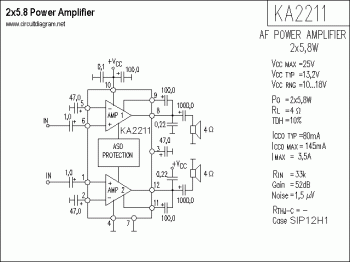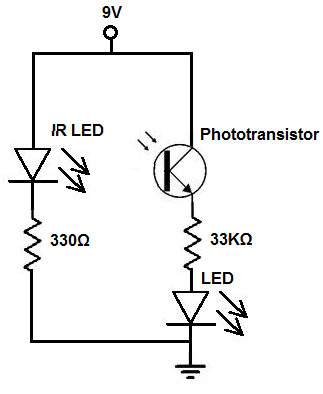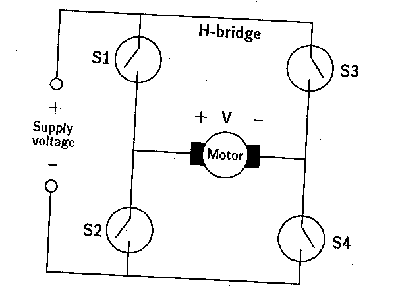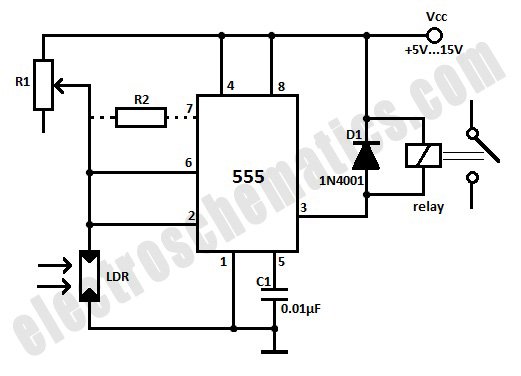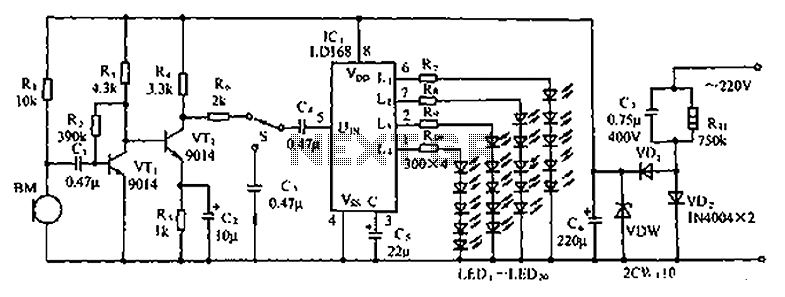
Specific color sensing circuit
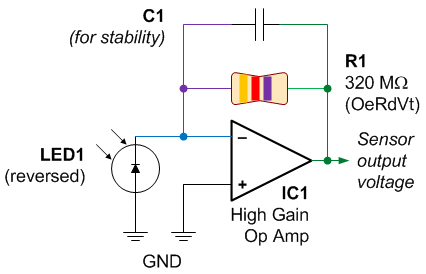
Color sensing using a camera and a sufficiently powered processor that runs image histogram logic (or similar algorithms) can reliably determine the presence of specific colors. However, alternatives that are significantly more cost-effective for detecting the presence or absence of certain colors (or their close shades) at close range, utilizing simpler and cheaper sensors with lower computational requirements, are being considered. The application requires the detection of a specific shade of light blue in a small area from a distance of 1 to 5 cm, although this range is not strictly defined. The setup should be such that the sensor only captures reflected light, minimizing direct irradiation from the light source. Suggestions for alternative methods are welcome. The discussion also touches on the challenges of detecting blue light in the presence of infrared noise and the potential use of LEDs as photodiodes to create a basic color sensor.
To achieve effective color detection in close-range applications, a circuit can be designed that utilizes light-emitting diodes (LEDs) and photodiodes or phototransistors. The approach involves reversing the operation of an LED to function as a photodiode, where it generates a small current when exposed to light. This current can be amplified using a transimpedance amplifier configuration, which converts the current into a measurable voltage signal.
The circuit would typically consist of an LED that emits light in the blue spectrum, paired with a phototransistor that has a wide spectral sensitivity, especially around the 400 nm range. By incorporating a narrow-band optical filter that allows only the desired blue wavelengths to pass through, the circuit can effectively differentiate between the target color and other colors present in the environment. The filter can be a photographic filter or a high-precision lab filter, depending on the budget and required sensitivity.
In addition, the circuit design must consider the biasing of the LED to optimize response time and sensitivity. A resistor-capacitor (RC) network may be employed to stabilize the output and filter out noise, particularly from infrared sources. The output voltage from the transimpedance amplifier can be monitored and compared to a baseline reading without the blue filter to determine the presence of the light blue color.
Calibration may be necessary to account for variations in ambient light and the inherent characteristics of the components used. By adjusting the gain of the amplifier and applying appropriate offsets, the system can be fine-tuned to provide reliable color detection in the specified range. This approach offers a cost-effective and efficient solution for color sensing applications in small, localized areas.Color sensing with camera and sufficiently powered processor running image histogram logic (or other such algorithms) can determine presence of certain colours fairly reliably. However, are there other, significantly more cost-effective mechanisms to determine presence/absence of certain color (or it`s close shades), at close range, using simpler/cheaper
sensors and lower computational requirements I am guessing that things like pH sensors, or other chemical sensors might use such methods. In my case, the application is such that I need to detect presence/absence of a specific colour (a shade of light blue), in a small area, at close range.
Edited: By `close range` I mean something between 1-5cms, though this isn`t a very strict requirement. I was thinking of "close" relatively, i. e. there is no direct irradiation from light source to sensor, kind-of a double barrel, such that only reflected light hits the sensor.
So closeness is a function of physical sensor placement, and I am open to suggestions (including completely alternative / orthogonal approaches). @JeeShenLee - You want to detect blue with IR And there`s IR noise too. Ever looked at the output of an IR receiver module without input signal stevenvh Jul 19 `12 at 7:07 @stevenvh, i was proposing other option rather than blue light.
Based on my understanding, visible light dynamic are too large to be detect reliably (due to intensity, hue, and not forgetting the light from the environment contain blue rays too). JeeShen Lee Jul 19 `12 at 7:28 @stevenvh, indeed the object is blue. In future I might need to detect other colours, but that`s for later and would prefer to keep things simple for now.
icarus74 Jul 19 `12 at 13:12 Since LEDs used as photodiodes are most sensitive to the colour they emit during normal operation, a basic colour sensor can be made using the LED in reverse and an opamp: The circuit above came from this page. It can also be done the other way round - a much more detailed look at colour sensing using LEDs and light sensors is available here - this page details using a normal light sensor and different colour LEDs.
I couldn`t find the app note mentioned in the comments, but this page seems to be quite a thorough treatment of the subject of transimpedance amplifiers. You can alter the bias across the LED to change response time/sensitivity. I don`t think that circuit works. If the output is > 0 V the LED`s current will make the inverting input > the non-inverting, and the output will simply go to zero.
Also I vaguely remember things like "offset voltage" and "input bias current" :-( stevenvh Jul 19 `12 at 6:35 @Steven - It`s a basic (dual rail) transimpedance amp, intended to show the concept. Will possibly need some fine tuning. I`ll add a couple of app notes, I remember TI do a good one but can`t seem to find it. Oli Glaser Jul 19 `12 at 6:57 The LED creates (reverse) current when the light shines on it - it acts as a photodiode.
Just as a sanity check I just put the above circuit together (using a MCP6021 and random LED) and it works fine. I used a 10Meg resistor with 100pF in parallel. Oli Glaser Jul 19 `12 at 8:02 If you want to detect a very specific color you`ll need a narrow-band filter like this 11nm bandwidth filter by Edmund Optics.
EO`s products are really high precision lab stuff, and so is the price: 300 dollar. If you can settle for less I would suggest to use a photographic filter will do as well. Use a phototransistor with a wide spectral sensitivity, especially in the 400 nm range, and compare the reading with and without blue filter. If the object`s color is blue there will be less difference in reading than for a red object for instance.
You`ll have to take an offset into account as well, since the filter won`t pass 100 % light, even if blue. For instance if the filter attenuates by 3 dB (photographers talk about f-stops) then a blue reading with
🔗 External reference
To achieve effective color detection in close-range applications, a circuit can be designed that utilizes light-emitting diodes (LEDs) and photodiodes or phototransistors. The approach involves reversing the operation of an LED to function as a photodiode, where it generates a small current when exposed to light. This current can be amplified using a transimpedance amplifier configuration, which converts the current into a measurable voltage signal.
The circuit would typically consist of an LED that emits light in the blue spectrum, paired with a phototransistor that has a wide spectral sensitivity, especially around the 400 nm range. By incorporating a narrow-band optical filter that allows only the desired blue wavelengths to pass through, the circuit can effectively differentiate between the target color and other colors present in the environment. The filter can be a photographic filter or a high-precision lab filter, depending on the budget and required sensitivity.
In addition, the circuit design must consider the biasing of the LED to optimize response time and sensitivity. A resistor-capacitor (RC) network may be employed to stabilize the output and filter out noise, particularly from infrared sources. The output voltage from the transimpedance amplifier can be monitored and compared to a baseline reading without the blue filter to determine the presence of the light blue color.
Calibration may be necessary to account for variations in ambient light and the inherent characteristics of the components used. By adjusting the gain of the amplifier and applying appropriate offsets, the system can be fine-tuned to provide reliable color detection in the specified range. This approach offers a cost-effective and efficient solution for color sensing applications in small, localized areas.Color sensing with camera and sufficiently powered processor running image histogram logic (or other such algorithms) can determine presence of certain colours fairly reliably. However, are there other, significantly more cost-effective mechanisms to determine presence/absence of certain color (or it`s close shades), at close range, using simpler/cheaper
sensors and lower computational requirements I am guessing that things like pH sensors, or other chemical sensors might use such methods. In my case, the application is such that I need to detect presence/absence of a specific colour (a shade of light blue), in a small area, at close range.
Edited: By `close range` I mean something between 1-5cms, though this isn`t a very strict requirement. I was thinking of "close" relatively, i. e. there is no direct irradiation from light source to sensor, kind-of a double barrel, such that only reflected light hits the sensor.
So closeness is a function of physical sensor placement, and I am open to suggestions (including completely alternative / orthogonal approaches). @JeeShenLee - You want to detect blue with IR And there`s IR noise too. Ever looked at the output of an IR receiver module without input signal stevenvh Jul 19 `12 at 7:07 @stevenvh, i was proposing other option rather than blue light.
Based on my understanding, visible light dynamic are too large to be detect reliably (due to intensity, hue, and not forgetting the light from the environment contain blue rays too). JeeShen Lee Jul 19 `12 at 7:28 @stevenvh, indeed the object is blue. In future I might need to detect other colours, but that`s for later and would prefer to keep things simple for now.
icarus74 Jul 19 `12 at 13:12 Since LEDs used as photodiodes are most sensitive to the colour they emit during normal operation, a basic colour sensor can be made using the LED in reverse and an opamp: The circuit above came from this page. It can also be done the other way round - a much more detailed look at colour sensing using LEDs and light sensors is available here - this page details using a normal light sensor and different colour LEDs.
I couldn`t find the app note mentioned in the comments, but this page seems to be quite a thorough treatment of the subject of transimpedance amplifiers. You can alter the bias across the LED to change response time/sensitivity. I don`t think that circuit works. If the output is > 0 V the LED`s current will make the inverting input > the non-inverting, and the output will simply go to zero.
Also I vaguely remember things like "offset voltage" and "input bias current" :-( stevenvh Jul 19 `12 at 6:35 @Steven - It`s a basic (dual rail) transimpedance amp, intended to show the concept. Will possibly need some fine tuning. I`ll add a couple of app notes, I remember TI do a good one but can`t seem to find it. Oli Glaser Jul 19 `12 at 6:57 The LED creates (reverse) current when the light shines on it - it acts as a photodiode.
Just as a sanity check I just put the above circuit together (using a MCP6021 and random LED) and it works fine. I used a 10Meg resistor with 100pF in parallel. Oli Glaser Jul 19 `12 at 8:02 If you want to detect a very specific color you`ll need a narrow-band filter like this 11nm bandwidth filter by Edmund Optics.
EO`s products are really high precision lab stuff, and so is the price: 300 dollar. If you can settle for less I would suggest to use a photographic filter will do as well. Use a phototransistor with a wide spectral sensitivity, especially in the 400 nm range, and compare the reading with and without blue filter. If the object`s color is blue there will be less difference in reading than for a red object for instance.
You`ll have to take an offset into account as well, since the filter won`t pass 100 % light, even if blue. For instance if the filter attenuates by 3 dB (photographers talk about f-stops) then a blue reading with
🔗 External reference
